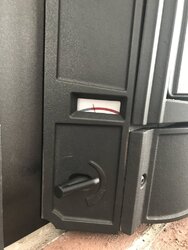Tinmanb1b
New Member
First post on here- I've been reading on this forum for almost a year now trying to decide on what stove to buy and how to install. I have a large but well insulated home (just under 3600 Sq ft) and live just outside Anchorage Alaska. I chose to go with the Blaze King, King Ultra. I have to say I would hug this stove if it wasn't so hot all the time. It has been burning 24/7 for about 5 weeks now. It got down to about 5 degrees here last night and the furnace didn't have to kick in even once. I was able to hold about 66 degrees at the point of the house that is furthest form the stove. I try to set the stove to be almost out of wood at the 12 hour mark and I hit the mark 9 times out of ten. I figured it would pay for it's self in 4 to 5 years but if it keeps this performance up it will be more like 2 or 3 years. Anyway, I just wanted to thank all of you guys for posting and sharing your knowledge and experiences for guys like me to soak up.


